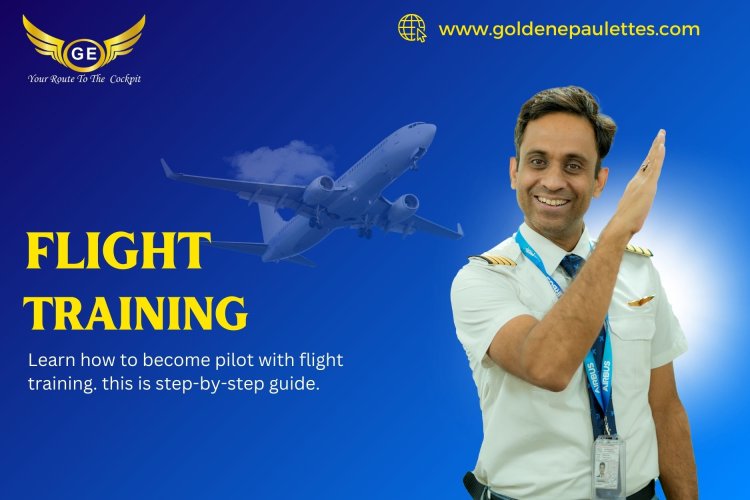The Path to Becoming a Commercial Pilot
This article outlines the path to becoming a commercial pilot and how flight training programs help students progress toward this goal.

The Path to Becoming a Commercial Pilot
Becoming a commercial pilot is a dream for many aspiring aviators, but it requires a clear plan, dedication, and several stages of training and certification. For those interested in making flying a career, understanding the necessary steps, qualifications, and training requirements is crucial. This article outlines the path to becoming a commercial pilot and how flight training programs help students progress toward this goal.
1. Starting with Private Pilot Training
The journey to becoming a commercial pilot begins with obtaining a private pilot’s license (PPL). Flight training programs start by teaching students the basics of flying, including how to control an aircraft, navigate, and manage basic emergency procedures. The PPL is the foundation for all subsequent pilot training and requires a minimum number of flight hours, typically around 40 hours, along with written and practical exams.
Once students have mastered the fundamentals and obtained their PPL, they are prepared to move on to more advanced training for commercial piloting.
2. Accumulating Flight Hours and Experience
After obtaining a private pilot’s license, the next step toward becoming a commercial pilot is accumulating flight hours. Flight training focuses on helping students gain the necessary experience and flight hours required for a commercial license. In the U.S., this means reaching 250 hours of flight time, including specific requirements for night flying, cross-country flights, and instrument flying.
Many aspiring commercial pilots work as flight instructors, banner tow pilots, or in other entry-level aviation jobs to accumulate the required flight hours. During this time, they continue to refine their skills and gain additional experience in different types of flying.
3. Earning an Instrument Rating and Commercial Pilot License (CPL)
To qualify for a commercial pilot’s license (CPL), students must first earn an instrument rating (IR). Flight training for this rating teaches pilots how to operate aircraft solely by reference to instruments, which is essential for flying in poor weather conditions and under instrument flight rules (IFR). This training allows pilots to fly in a broader range of conditions, making them more versatile and capable.
Once they have an instrument rating, pilots can pursue their commercial pilot’s license. The CPL requires additional flight hours, specific training in commercial flight maneuvers, and passing both written and practical exams. The training focuses on advanced piloting techniques and prepares pilots for more complex and demanding flight operations.
4. Pursuing an Airline Transport Pilot License (ATPL)
The final step to becoming a fully qualified commercial pilot, especially for those aiming to fly for major airlines, is obtaining an Airline Transport Pilot License (ATPL). Flight training programs guide students through the advanced training required for the ATPL, which includes both written exams and practical flight tests. To be eligible for the ATPL, pilots must have at least 1,500 hours of flight time and demonstrate proficiency in advanced aviation skills.
Once the ATPL is obtained, pilots are eligible to fly for airlines as captains or first officers, operating large commercial aircraft.
Conclusion
Becoming a commercial pilot is a rewarding but challenging process that requires dedication, education, and extensive flight experience. Flight training plays a pivotal role in preparing students for each stage of this journey, from private pilot training to obtaining the commercial pilot’s license and eventually the ATPL. With the right training and experience, aspiring pilots can achieve their dream of flying professionally and making a career out of aviation.
What's Your Reaction?

















.jpg)